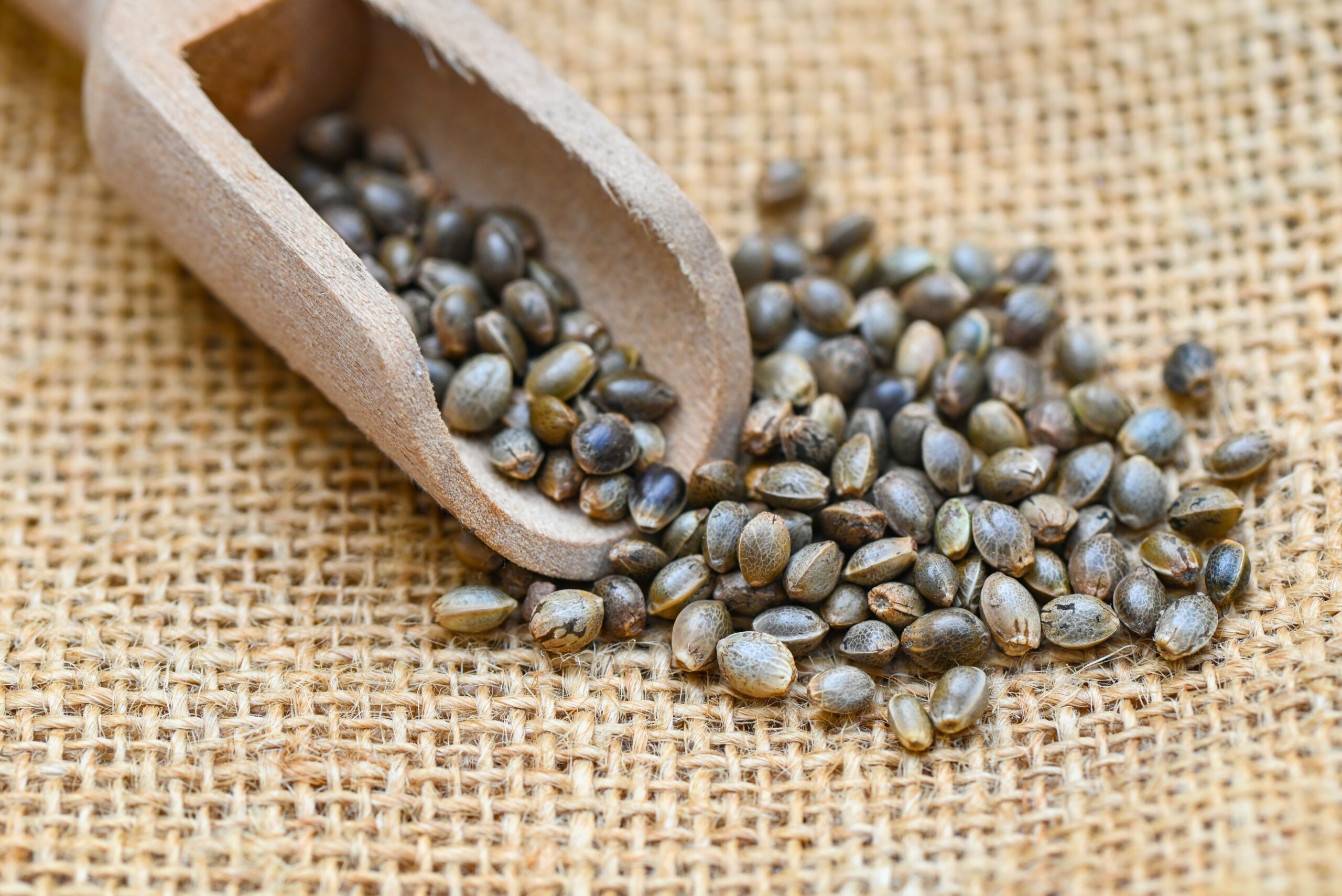Hydroponics, whether done indoors or in a greenhouse, offers several benefits, as it leads to the production of healthy marijuana plants. Applying hydroponic systems to marijuana plants is an excellent choice for growers, whether they are beginners or experts.
Hydroponics can range from a simple method to an intensive application for your marijuana plants, depending on your commitment levels. Extensive discussions are ahead regarding the “how,” “what,” “when,” and almost everything you need to know about this topic.
In Layman’s Terms
In simple terms, hydroponic growing is the method of cultivating marijuana plants without soil. Instead of soil, water is used, and the roots of marijuana plants are submerged in a mineral nutrient solution. It’s actually quite straightforward.
Achieving Stunning Results
To achieve stunning results, the nutrient blend should provide what the marijuana plant needs at specific times. This means each plant can focus entirely on growth instead of worrying about nutrients. Unlike many other plants, most marijuana plants develop root balls searching for food, except for those grown hydroponically. Here, the focus should be on the buds, leaves, and even the flowers of the cannabis plant. The outcome is large plants in a short period with substantial flowers and buds.
How to Grow Marijuana Hydroponically?
There are various methods for hydroponically growing marijuana, ranging from simple to complex. You can choose the method that best suits your commitment level. Each system can be set up at home using everyday tools and equipment available at hardware stores.
Hydroponic Nutrient Blend
There are 16 nutrients required to grow your hydroponic marijuana plant, known as macronutrients. The primary macronutrients are Nitrogen (N), Phosphorus (P), and Potassium (K). These three elements can be found in most fertilizer packages.
Buying Ready-Mixed Nutrients
If you’re looking to grow marijuana, consider investing in pre-mixed nutrients, as they provide all the necessary nutrients in one package.
Here’s a simple way to mix nutrients:
- Combine water and nutrient concentrate in a container.
- Pour the mixture into the hydroponic system.
- Use a nutrient blend specifically designed for hydroponics for the best results.
Customizing Your Own Nutrient Mixture
Experienced hydroponic marijuana growers often create their nutrient mixtures. Each cannabis plant absorbs only the nutrients it needs, minimizing waste. This process requires some knowledge of chemistry basics and mixing equipment.
Nutrient solutions may include additives like blood meal, bone meal, and kelp extract, which enhance organic plant growth by incorporating additional amino acids, sugars, hormones, vitamins, plant acids, and enzymes.
Establishing the Proper pH Level
Maintaining the correct pH level is crucial for healthy marijuana plant growth. Regularly monitor and adjust the pH of your nutrient solution for optimal results.
Maintaining the proper pH level is crucial as it indicates the acidity or alkalinity within a growing plant. A pH of one signifies extreme acidity, while a pH level of 14 indicates high alkalinity. To ensure optimal root health and nutrient absorption, it’s best to aim for a pH level ranging between 5.8 and 6.5.
How to Measure pH Levels?
pH levels can be measured using either electronic or chemical methods. In the chemical method, you use test strips from your kit, which can be depleted with frequent use.
On the other hand, electronic pH measurement, while more expensive due to the need to replace the entire kit after each test, offers a simpler approach. By immersing the pH pen into the solution, the pH level is promptly displayed on the LCD.
Adjusting pH Levels
Should the pH level of your solution be excessively high, it’s necessary to raise acidity. You can achieve this by introducing nitric acid, sulfuric acid, or phosphoric acid. These acids break down and leave behind additional sulfur, phosphorus, and nitrogen, which your marijuana plants will require over time.
Conversely, if the pH level is too low, you should increase alkalinity. Potassium hydroxide or sodium hydroxide is recommended for this purpose. These substances also break down, offering additional potassium or sodium necessary for plant growth.
Exploring Organic Solutions
Hydroponic growers are increasingly seeking eco-friendly, organic growing methods, moving away from chemical inputs. However, transitioning to organic practices poses unique challenges in hydroponics. Traditional organic methods, such as using animal waste in soil, do not readily apply to hydroponics.
Understanding the challenge involves considering how marijuana plants absorb nutrients. These plants require 16 elements, which must be converted into chemical salts for plant absorption. This conversion takes place when two elements, like calcium and nitrogen, combine to form a salt that can be absorbed by the plant through the growing medium.
In soil-based cultivation, bacteria break down compost, releasing the necessary chemical salts. In hydroponic systems, different bacteria are involved, necessitating the use of nutrient solutions to provide nutrients in a form that the plants can naturally absorb. This can potentially limit plant growth compared to traditional soil-based organic methods.
Thriving with Hydroponic Marijuana
Hydroponic marijuana cultivation can be successfully carried out in various locations within your home, such as a shed or garage, to simulate an indoor growing environment. When setting up your grow space, consider the fundamental requirements of your plants. Imagine a garden on a calm, sunny summer day – this serves as an ideal environment for growing marijuana. Strive to recreate these conditions to achieve the best results.
Critical factors for successful hydroponic growth include:
- Light source
- Proper temperature
- Low humidity
- Atmosphere
🌞 Creating the Ideal Lighting Setup 🌞
Lighting is a pivotal factor regardless of your chosen growing location. You can utilize natural sunlight or install artificial lighting, depending on your circumstances. Adequate lighting is essential for your marijuana plants to thrive, emulating the conditions of a sunny summer day. Positioning the light source correctly is paramount for optimal results.
If your growing area lacks natural light, this guide can assist you in determining the appropriate light levels. Skylights or windows may not provide sufficient light for marijuana plants. Additionally, day and night cycles can impact light availability, necessitating control over this variable to ensure consistent plant growth.
For greenhouse growers, supplemental lighting may be required during periods of reduced natural light to maintain optimal growth. An ideal growing environment features white walls that reflect light in all directions, promoting accelerated plant growth.
🌡 Achieving the Ideal Temperature 🌡
Maintaining a consistent temperature in your marijuana-growing environment is vital for healthy plant development. Extreme temperature swings can be detrimental and even fatal to your plants. The optimal temperature range for marijuana growth falls between 68 to 83 degrees Fahrenheit (20 to 28 degrees Celsius), with the middle of this range being the most desirable.
To maintain the right temperature, you can rely on the heat emitted by your grow lights. However, it’s crucial to manage excess heat effectively. This can be achieved by incorporating a fan equipped with a built-in thermostat to regulate any excessive heat.
During colder seasons, the temperature in your growing space may drop significantly, which can impact your plant’s productivity and overall shape. To counter this, it’s advisable to maintain a stable temperature throughout the day and night. Many marijuana growers opt to install propane heaters with attached thermostats to maintain room temperatures between 68 to 86 degrees Fahrenheit (20 to 30 degrees Celsius).
By connecting your light source to the thermostat, you can ensure that the fan operates in sync with the desired growth temperature. The propane heater also helps elevate carbon dioxide levels, which is beneficial for marijuana plant growth. To effectively manage temperature, you’ll need a thermometer with a range from minimum to maximum. Regular calibration and daily temperature monitoring are essential to provide the optimal conditions for your marijuana plants.
Any changes in room temperature, whether an increase or decrease, should prompt adjustments in fan settings when it’s in use. If temperatures drop, propane heater settings should be modified accordingly. Temperature control plays a vital role in indoor marijuana cultivation, and using a thermo-hygrometer helps monitor temperature and humidity fluctuations, allowing you to replicate natural outdoor conditions indoors.
💧 Humidity Control 💧
Humidity is another crucial factor to monitor when growing marijuana plants indoors. Failure to manage humidity can lead to plant damage and the development of gray mold (Botrytis). To keep humidity levels in check, consider installing a hygrometer to continuously monitor humidity levels in your growing room, preferably near your thermometer for consistent monitoring.
Maintaining humidity levels above 50% is essential. Excessive humidity can damage your marijuana plants, so use the installed fan until humidity readings return to acceptable levels. To control humidity effectively, avoid overwatering and promptly wipe up any water or nutrient solution spillage. Ensure that the nutrient solution tank is covered to prevent evaporation, maintaining low humidity levels. In essence, create a dry environment in your growing room.
🌬 Creating the Ideal Atmosphere 🌬
Careful consideration of the atmosphere in your growing room is crucial and a topic of significant debate among marijuana growers. It’s widely known that all plants, including marijuana, require fresh air and carbon dioxide (CO2) for growth. However, normal air contains only about 330 parts per million (ppm) of carbon dioxide, which is insufficient for optimal marijuana plant growth. These plants continue to require additional CO2 until they have enough.
To ensure a consistent supply of fresh air, many growers use fans to address potential CO2 depletion issues. However, this approach comes with a drawback: an increased heat supply is required to prevent harm to marijuana plants during colder weather. External weather conditions can also affect the indoor growing room. To address this challenge, many growers opt for carbon dioxide supplementation. CO2 can be added via a propane heater or by using regulated CO2 bottles available at hardware stores.
🍾 CO2 Bottles 🍾
CO2 bottles are readily available in various stores and can also be found in beer kegs used for pressurization. Medium-sized CO2 bottles are the most practical choice for your growing room, as they are easy to handle and transport, even if your growing room is located on the second or third floor of your house. Aluminum cylinders are particularly convenient for carrying carbon dioxide. You’ll need a regulator to control the gas release for each use on your marijuana plants. Regulators suitable for beginners and professional use are widely available, making CO2 application more straightforward.
⚙️ Generating Your Own Carbon Dioxide ⚙️
A machine known as a growth gas generator can help you produce your own carbon dioxide. This machine is designed to facilitate marijuana plant growth in small indoor settings or greenhouses. It operates by burning propane to generate carbon dioxide for the plants, with electric solenoids controlling the machine and a timer for regulation. The growth gas generator is highly efficient in providing carbon dioxide to marijuana plants. It’s advisable to enrich your grow room with carbon dioxide during the daytime when plants require it most. Carbon dioxide sensors can also be installed to monitor and maintain carbon dioxide levels. The machine is suitable for spaces up to 141 square feet (43 square meters) and doesn’t pose heat-related issues.
Each growth gas generator is constructed from top-quality stainless steel, ensuring durability even under varying environmental conditions in a greenhouse. Unlike heaters, the growth gas generator offers advantages such as flexibility in releasing carbon dioxide at any time of the day. Heaters, in contrast, produce carbon dioxide primarily at night due to heat generation. To bring about significant growth improvements in your marijuana plants, maintaining carbon dioxide levels above 1,500 ppm is essential. To become a serious grower capable of achieving record-breaking marijuana yields, provide your plants with the best possible lighting, such as the Hydroponic Growing method, to fully harness the benefits of increased carbon dioxide.
🌿 Monitoring Carbon Dioxide Levels 🌿
Even novice marijuana growers can now track carbon dioxide levels in their grow rooms thanks to modern technology. This is made possible with a readily available carbon dioxide analysis kit on the market. The kit employs a pump-action analyzer injection and an analyzer tube to detect carbon dioxide levels, ranging from 300 to 5,000 ppm. It includes detailed instructions for proper usage. By conducting a quick test, you can assess the carbon dioxide levels in your grow room. Paying attention to these levels is as vital for serious marijuana cultivators as ensuring a consistent water supply for their plants. This factor significantly contributes to the success and yield of your marijuana plants.
🌬 Enhancing Air Quality with Negative Ions 🌬
Consider installing a negative ion generator in your grow room or greenhouse to improve air quality. This cost-effective device effectively reduces harmful elements such as pollen, bacteria, dust, and cigarette smoke. Negative ion generators efficiently eliminate these elements and offer benefits such as increased yields and enhanced marijuana plant quality. Additionally, they help neutralize the distinctive odor associated with growing marijuana in your home.
🐜 Pest Control Strategies 🐜
While it’s not possible to delve into all aspects of pest control in detail due to the broad nature of the topic, it’s important to highlight the shift among marijuana growers toward eco-friendly, non-toxic pest control methods. The adoption of biological pest control methods represents a significant change in the way we approach pest management in agriculture.
Biological pest control involves using insects and other creatures that are not harmful to plants to combat harmful pests. These beneficial insects and creatures act as predators, keeping pest populations in check. Here are two examples:
- Two-Spotted Mite vs. Spider Mite: Spider mites, although tiny and difficult to detect, can cause significant damage to marijuana plants. They multiply rapidly and are resistant to many chemical pesticides. In biological control, the predatory mite “phytoseiulus-persimilis” is used to target spider mites. These predatory mites exclusively feed on two-spotted mites, helping maintain a balance between pest and predator populations.
- Whiteflies: Whiteflies are a common and commercially significant pest. Traditional chemical methods are often ineffective against them. To combat whiteflies, the tiny wasp “Encarsia-Formosa” is used as a predator. These harmless wasps exclusively target whiteflies, laying their eggs on whitefly larvae. As the wasp larvae mature, they consume the whitefly larvae. This biological control method, known as “En-Strip,” is effective in managing whitefly populations.
🌱 Homemade Hydroponic Systems Simplified 🌱
Let’s explore one hydroponic system known as the “Wick System” and the materials needed to set it up:
Wick System: The wick system is one of the simplest hydroponic methods, requiring minimal maintenance. It consists of two pots stacked on top of each other. The upper pot holds the growing medium, while the lower one contains the nutrient or water solution. One or more wicks pass from the upper pot to the lower one, facilitating the transfer of the nutrient solution via capillary action.
To set up this system, use rock wool slabs, with one-half of the slab fitting snugly into a cat’s litter pan to provide enough room for root growth. The ratio of lava to vermiculite should be 4:1, with a tablespoon of Dolomite Lime added for every gallon (3.5 liters) of the growing medium. This mixture retains water while providing proper drainage and oxygenation to the roots. However, this mixture is typically not reusable due to the inability to sterilize it.
Watering Your Hydroponic Marijuana Plants: Water your plants three to four times a day, ensuring that the Rockwool remains damp but not saturated. Square pots are recommended because they can hold more growing medium. After continuous watering, the vermiculite may settle, so punch additional holes in the pots’ bottom to allow roots to wick the necessary moisture. Maintain a water reservoir with a depth of 1.5 to 3 inches (4 to 7.5 centimeters), allowing it to partially evaporate between watering. Consistent watering with moderate liquid volumes is key to success, ensuring the plants receive adequate hydration even if you need to leave for an extended period.
🍃 Growing with the Wick System: The wick system offers the advantage of delivering ample oxygen to the roots, contributing to healthier marijuana plants. It provides results similar to the reservoir system but with less maintenance. Your primary tasks include regular watering and nutrient feeding, making it a convenient choice for novice hydroponic growers.
If you require further clarification or wish to explore other topics related to marijuana cultivation or hydroponic systems, please don’t hesitate to reach out.


